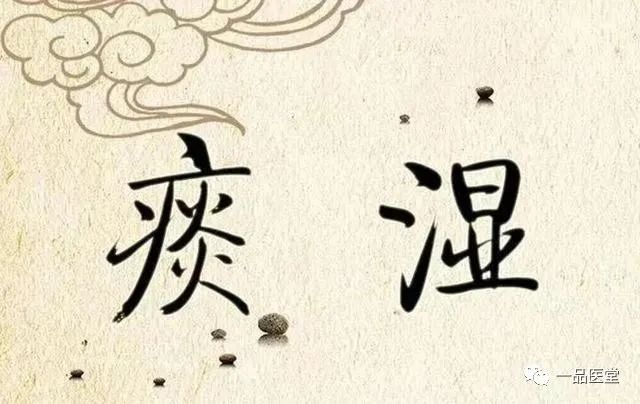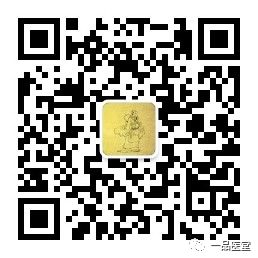Traditional Chinese Medicine Treatment of Phlegm-Damp Syndrome

Phlegm-Damp Syndrome refers to the condition caused by spleen deficiency leading to improper transportation of fluids, resulting in the accumulation of dampness and phlegm. Over time, this leads to phlegm obstructing the lungs, characterized by symptoms such as cough with abundant white phlegm, chest fullness, and discomfort. Clinically, it presents as cough with copious white and thin phlegm, possible expectoration of frothy sputum, wheezing, nausea, poor appetite, heaviness in limbs, dizziness, palpitations, pale or sallow complexion, a pale and swollen tongue, slippery and greasy coating, and a slippery or weak pulse.
1. Syndrome Diagnosis
Cough with copious white and thin phlegm, chest fullness, fatigue, weakness in limbs, no thirst or nausea, abdominal distension with loose stools, dizziness, palpitations, heaviness in limbs, pale and swollen tongue, white greasy coating, slippery and weak pulse. Coughing up white phlegm that is easy to expectorate or wheezing; possible nausea and vomiting; dizziness; weakness in hands and feet, difficulty walking or holding objects; possible confusion or coma. This aligns with the pathogenesis of spleen deficiency, improper fluid distribution, or dampness accumulation leading to phlegm obstructing the lungs. It is commonly seen in overweight individuals, characterized by a deficiency of the root and excess of the branch, with qi deficiency and yang deficiency as the root, and phlegm and dampness as the branch.
Phlegm-Damp Syndrome can be seen in Western medicine as chronic bronchitis, cor pulmonale, chronic gastritis, ear-related vertigo, post-polio syndrome, and post-neuritis sequelae.
2. Syndrome Differentiation and Treatment
(1) Phlegm-Damp Cough Syndrome
This syndrome is due to the accumulation of phlegm-dampness in the lungs, obstructing lung function, leading to cough. Symptoms include cough with copious phlegm, white and sticky phlegm, chest fullness, possible wheezing, expectoration providing slight relief, or accompanied by nausea. The tongue is pale with a white greasy coating, and the pulse is slippery. This can be seen in chronic bronchitis and asthma. The treatment principle is to strengthen the spleen, dry dampness, transform phlegm, and stop cough.
Common formula: Er Chen Tang (Er Chen Decoction) (Ban Xia (Pinellia) 15g, Ju Hong (Tangerine Peel) 15g, Fu Ling (Poria) 9g, Zhi Gan Cao (Honey-fried Licorice) 5g).
Ban Xia is warm and drying, transforms dampness and phlegm, descends rebellious qi to stop vomiting; Ju Hong regulates qi and dries dampness, facilitating the smooth flow of qi and phlegm; Fu Ling strengthens the spleen and drains dampness, preventing dampness from accumulating and phlegm from forming; Sheng Jiang (Fresh Ginger) descends rebellious qi and transforms fluids, counteracting the toxicity of Ban Xia and assisting in the movement of qi and phlegm; Gan Cao harmonizes the other herbs and moistens the lungs. Together, these four herbs strengthen the spleen, dry dampness, transform phlegm, and stop cough. For phlegm-dampness, add Cang Zhu (Atractylodes) and Bai Zhu (White Atractylodes). For cold phlegm, add ginger juice. If spleen qi is not moving, the method should regulate qi and adjust the middle; if dampness accumulates and produces phlegm, it should also dry dampness and transform phlegm; strengthening the middle jiao will prevent dampness accumulation, and if dampness does not produce phlegm, the symptoms will resolve. This is the method of clarifying the root and clearing the source. In this formula, Ban Xia is the main herb due to its warming and drying properties, effectively addressing both the root and branch. The generation of phlegm is due to the stagnation of fluids, and the stagnation of fluids is due to qi not moving. Those who effectively treat phlegm do not treat the phlegm directly but rather treat the qi; when qi flows smoothly, the body’s fluids will also flow smoothly. Therefore, Chen Pi (Aged Tangerine Peel) is used to aromatically awaken the spleen, smooth the qi mechanism, and assist Ban Xia in transforming dampness and moving the spleen, allowing spleen yang to function and phlegm to be eliminated, relieving fullness and stopping nausea. Fu Ling can drain dampness, and Gan Cao can tonify the spleen, guiding dampness downward and harmonizing the middle. This formula effectively addresses the pathogenesis and each herb corresponds well to the symptoms, making the combination quite effective. The name Er Chen Tang reflects the use of aged herbs, as both Ban Xia and Ju Hong are aged.
Other formulas for this syndrome include Dao Tan Tang (Phlegm-Transforming Decoction) (Ban Xia 6g, Dan Nan Xing (Arisaema) 3g, Zhi Shi (Bitter Orange) 3g, Fu Ling 3g, Ju Hong 3g, Gan Cao 2g, Sheng Jiang 3g).
(2) Phlegm-Damp Asthma
Symptoms include rapid breathing, phlegm rattling in the chest, possible shoulder elevation and nasal flaring, pale tongue with white greasy coating, and slippery pulse. This is caused by the invasion of wind, cold, heat, and dampness, leading to lung qi fullness and resulting in asthma. Both phlegm and qi can cause asthma. Phlegm obstructing the lungs leads to the loss of lung function. The main treatment principle is to dry dampness, eliminate phlegm, and calm asthma.
Main formula: San Zi Yang Qin Tang (Three Seed Nourishing Decoction) (Bai Jie Zi (White Mustard Seed) 6g, Su Zi (Perilla Seed) 9g, Lai Fu Zi (Radish Seed) 9g).
Bai Jie Zi warms the lungs and regulates qi, quickly resolving phlegm; Su Zi descends qi and moves phlegm, stopping cough and calming asthma; Lai Fu Zi aids digestion and eliminates stagnation, moving qi and eliminating phlegm. The combination of these three herbs promotes smooth qi flow and phlegm elimination, drying dampness and calming asthma. For excessive phlegm, add Ban Xia; for chest fullness, add Zhi Ke (Bitter Orange). When phlegm obstructs the airways, causing qi to not descend, the method should eliminate phlegm and descend rebellious qi; when phlegm is removed, qi will descend, and when qi descends, asthma will resolve. This formula uses Zi Su Zi to descend qi and move phlegm, targeting the lung meridian to open the upper jiao; Bai Jie Zi promotes smoothness and moves phlegm, targeting the membrane and collaterals to relieve the three jiao; Lai Fu Zi aids digestion and moves phlegm, targeting the spleen and stomach to eliminate stagnation in the middle jiao. Each of the three seeds has the function of regulating qi and moving phlegm, and their combined use can effectively eliminate phlegm, descend rebellious qi, and aid digestion. Each seed has its strengths: Zi Su Zi excels at descending qi, Bai Jie Zi at promoting smoothness, and Lai Fu Zi at aiding digestion. Depending on the specific symptoms, the main herb can be emphasized while the others serve as support.
Other formulas for this syndrome include Er Chen Tang (Ban Xia 15g, Ju Hong 15g, Fu Ling 9g, Zhi Gan Cao 5g).
(3) Phlegm-Damp Vomiting Syndrome
This syndrome is caused by phlegm-dampness obstructing the spleen and stomach, disrupting their functions of transportation and transformation. Symptoms include vomiting of phlegm or phlegm mixed with food, abdominal fullness or pain, poor appetite, irregular eating habits, and excessive consumption of cold foods can easily trigger this condition, possibly accompanied by bowel sounds. Dizziness, palpitations, heaviness in limbs, white greasy coating, and slippery or wiry pulse. This is often due to phlegm obstructing the middle, preventing stomach qi from descending and causing it to rebel. This can be seen in chronic gastritis. The treatment principle is to strengthen the spleen, dry dampness, transform phlegm, and stop cough.
Formula: Xiao Ban Xia Tang (Minor Ban Xia Decoction) (Ban Xia 12g, Sheng Jiang 6g).
Ban Xia eliminates phlegm and stops cough, warming the middle and stopping vomiting; Gan Cao harmonizes and reduces the toxicity of Ban Xia, working together to warm the middle, transform phlegm, and stop vomiting. For weak constitution, add Dang Shen (Codonopsis); for those with chills, add Gan Jiang (Dried Ginger); for excessive phlegm, add Chen Pi. Xiao Ban Xia Tang is a well-known formula for drying dampness, transforming phlegm, descending rebellious qi, and stopping vomiting. It effectively eliminates existing phlegm and prevents the generation of new phlegm. In this formula, Ban Xia has a strong effect on eliminating phlegm and descending rebellious qi, making it particularly effective for treating phlegm and fluid-related vomiting. The addition of Sheng Jiang warms the stomach and clears fluids, descending rebellious qi and stopping vomiting, enhancing the phlegm-eliminating and rebellious qi-descending effects while counteracting the toxicity of Ban Xia, making it a simple yet effective ancient formula.
Other formulas for this syndrome include Er Chen Tang.
(4) Phlegm-Damp Mental Confusion Syndrome
This is caused by phlegm-dampness obstructing the clear yang. Symptoms include dizziness, heaviness in the head, blurred vision, fatigue, excessive phlegm with frequent expectoration, white sticky phlegm, chest fullness, nausea, confusion, unclear speech, coma, poor appetite, and a tendency towards obesity, pale tongue with white greasy coating, and slippery pulse. This can be seen in Ménière’s disease. The treatment principle is to strengthen the spleen, dry dampness, transform phlegm, and open the orifices.
Main formula: Di Tan Tang (Phlegm-Dispersing Decoction) (Ban Xia 8g, Dan Nan Xing 5g, Ju Hong 6g, Zhi Shi 6g, Fu Ling 6g, Ren Shen (Ginseng) 3g, Shi Chang Pu (Acorus) 3g, Zhu Ru (Bamboo Shavings) 2g).
Ban Xia and Ju Hong are warm and drying, transforming dampness and phlegm, regulating qi and stopping vomiting; Fu Ling drains dampness and promotes urination, eliminating phlegm; Zhi Shi regulates qi and relieves fullness; Dan Nan Xing enhances the phlegm-transforming effects of Ban Xia and Ju Hong; Shi Chang Pu opens the orifices and disperses phlegm; Ren Shen and Gan Cao tonify qi and harmonize the middle. The entire formula dries dampness, regulates qi, and opens the orifices to disperse phlegm. Adding Jiang Can (Silkworm) can dispel wind and transform phlegm, and adding Tian Ma (Gastrodia) and Yu Jin (Curcuma) can extinguish wind. For treating phlegm obstruction, consider three aspects: first, eliminate the phlegm stagnation; second, relieve the rigidity; third, support the righteous qi. This formula is designed with these considerations in mind. The main herb, Dan Nan Xing, dispels phlegm stagnation and relieves rigidity; Ban Xia assists in drying dampness and transforming phlegm, Zhu Ru clears phlegm and opens the channels, enhancing the phlegm-dispersing effects. Chen Pi and Shi Chang Pu awaken the spleen and transform dampness, assisting Dan Nan Xing and Ban Xia in restoring spleen function and preventing phlegm from regenerating. Phlegm rises with qi, obstructing the heart orifices, and Zhi Shi helps to descend qi and eliminate phlegm, allowing phlegm to descend with qi. The role of Shi Chang Pu in awakening the spleen and transforming dampness is secondary; its main function is to open the heart qi to clear the tongue orifices, working with the other herbs to achieve phlegm-dispersing and orifice-opening effects. Additionally, Ren Shen and Gan Cao boost the righteous qi, supporting the body in expelling pathogens, making this formula a method of harmonizing the middle while providing support.
Other formulas for this syndrome include the patent medicine Su He Xiang Wan; Ban Xia Bai Zhu Tian Ma Tang (Ban Xia 9g, Tian Ma 6g, Fu Ling 6g, Ju Hong 6g, Bai Zhu 15g, Gan Cao 4g, Sheng Jiang 1 slice, Da Zao 2 pieces).
3. Discussion
Phlegm-Damp Syndrome often arises from spleen and stomach yang deficiency, leading to improper transportation and accumulation of fluids, resulting in dampness and phlegm. Alternatively, it may result from external invasion of dampness and phlegm that is improperly treated or neglected, leading to retention. Phlegm rises with qi, accumulating in the lungs, causing cough and asthma; phlegm obstructs the middle jiao, leading to disharmony in the spleen and stomach, resulting in vomiting; dampness obstructing clear yang can cause dizziness; and phlegm flowing through the meridians can lead to weakness. Careful differentiation is essential.

Chai Hu Jia Long Gu Mu Li Tang for Treating Insomnia Experience
Wu Gong is Good for Opening Stasis and Dissolving Masses

